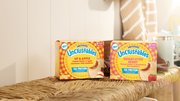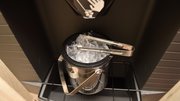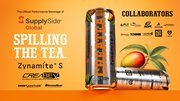Blog
Return Of The Powerhouse
March 2, 2015 by Tim Sanford
TAGS: Vending Times editorial, vending industry, vending editorial, retail automation, vending operator, vending industry history, coin machine, micro markets, coffee service, food service, Tim Sanford, Vending Task Force of the Coffee Development Group, full-line coffee vending machine, hot drinks, espresso machines |
The steadily strengthening economy has prompted an increase in the demand for vending services (as it always does), and the current generation of vending equipment certainly offers a variety of features and options that would have seemed fanciful a decade ago, and wildly imaginative in 1975. Vendors today also have a wider range of attractive products to offer, as new payment systems remove the pricing constraints that previously limited vending's ability to merchandise premium products. And suppliers of such products are recognizing the diverse population of away-from-home consumers who rely on vending for refreshments in workplaces, colleges and universities, hospitals and a growing range of public locations.
What we find surprising is that, with a few distinguished exceptions, this renewed interest in vending's ability to deliver quality products around the clock has not extended to full-size hot beverage machines. Even before the great contraction of the past decade, more attention was being paid to small-site hot beverage equipment.
The irony of this is that the industry did a tremendous amount of work in the 1980s and early '90s to improve public perception of vended coffee, and the results were very promising. Everyone remembered that the high-volume vending business that had evolved swiftly to meet the needs of large manufacturing plants in the quarter-century after World War II had found coffee and cup cold drinks -- the "wet mix" -- to be the profit drivers of a full-line operation. Both prepared a finished drink from bulk ingredients, and the operator took the profit from the value added by the preparation. As the great assembly lines of the postwar industrial boom were eroded by automation, quality circles, downsizing and offshoring, operators began to grapple with the uninformed but widespread opinion that vended coffee was, somehow, a blue-collar last-resort kind of refreshment.
The industry's counterattack was comprehensive and successful. The advent of whole-bean coffee venders, which quickly evolved into dual-cup-size "full-house" machines that could offer two choices of freshly brewed coffee (or individually infused tea), along with whipped gourmet soluble beverages, provided the firepower.
The Vending Task Force of the Coffee Development Group identified the targets. Working with quality-conscious vending operators, CDG's "coffee ambassadors" conducted market studies to determine what, specifically, consumers liked and disliked about vended coffee. The likes, predictably, included speed, convenience, ready availability and good variety. The dislikes -- registered, of course, by people who were using well-maintained modern machines selling good HRI-quality coffee -- were, basically, the uninsulated cup and the soluble creamer.
Both of these perceived defects could be rectified. The disposables industry knows how to make an insulated cup with a sufficiently thin, rigid wall to nest compactly and de-nest reliably. There are good soluble dairy products available; they're widely used in Italian-made superautomatic espresso machines.
Several trials, one by a major manufacturer and another by a leading equipment distributor and importer, were conducted with their operator customers, and demonstrated that vending patrons did appreciate the improvements -- and would pay for them.
This finding, of course, encountered the traditional resistance of old-school operators who paid very close attention to their product cost, regarding this as critical to offering the highest commissions and the lowest prices. Nevertheless, there seemed to be a new willingness to look at other variables more important in the contemporary marketplace. And then the Great Contraction set in.
But it is ending now. As account populations increase and new business becomes more available, we think it's time to turn the spotlight back on the full-featured hot beverage machine. Today's variety of high-tech upscale small-location coffee and tea preparation options gives operators a better option for lower-volume accounts than an old full-size coffee machine, but today's top-of-the-line hot beverage venders offer a comprehensive solution for high-traffic locations.
Of course, full-size coffee machines remain a mainstay of vending services in many locations. We think, though, that their potential extends well beyond the classic vending market. We suspect that most of today's young consumers don't associate coffee vending machines with factory workers taking an 11-minute break behind the punch press. We have observed with interest the launch of programs designed to put state-of-the-art hot drink technology in front of the general public in a wide range of locations.
We also think it's time to pick up some of the threads that were lost between the lapsing of the old International Coffee Agreement in 1989 and the economic downturn of 2007-08, and start actively promoting high-quality vended coffee again. This process must begin with operators themselves recognizing just how good vended hot beverages can be; it will really catch fire when patrons find out.







